7 Procurement Management Software Tools
Procurement software will simplify controlling the costs associated with your product.
But choosing the right solution can be overwhelming. You know how long those “Top SaaS for X” lists can get, right?
If you’re looking for a straightforward, BS-free guide, you’re in the right place. In this article, we’ll cover:
- The benefits of using procurement software
- Must-have features to look for
- How to evaluate and select the best fit for your needs
What is procurement software?
Procurement software streamlines and automates sourcing, purchasing, and managing goods and services needed by an organization. While traditionally associated with finance and operations, procurement software plays a crucial role in product development for several reasons:
- Sourcing Materials and Components: Procurement tools help product teams find reliable suppliers, compare quotes, and manage orders for everything from raw materials to specialized components.
- Contracting Services: Whether it’s hiring freelance developers, engaging design agencies, or procuring user testing services, procurement software ensures contracts are clear, payments are tracked, and compliance requirements are met.
- Managing Expenses and Budgets: Robust procurement systems integrate with project management and financial tools, providing real-time visibility into product development spending, simplifying cost tracking, and aiding in budgeting decisions.
Procurement software is not just for the purchasing department – it brings efficiency, transparency, and cost control to the process of building great products.
Top 7 Procurement Tools for Product Development
Before we dive into the options available, a quick note.
Procurement tools range from specialized solutions (e.g., sourcing only) to full-fledged suites. We’ll focus on tools with broad capabilities relevant to product development needs.
The “best” tool depends on the size of your team, the complexity of your procurement processes, and your integration needs with your existing tools.
Here’s a breakdown of some popular options:
Our Pick: Fibery (duh)
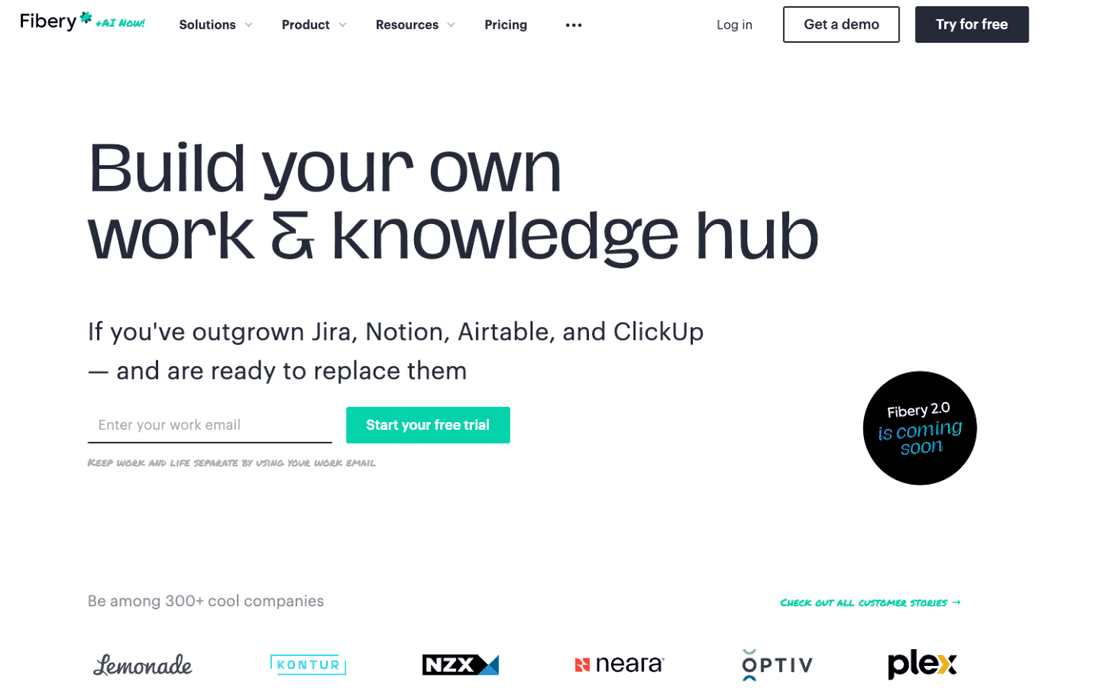
- Best for: Agile Product Teams that need flexibility
- Pricing: 14-day free trial, pro plans start at $10.
Not to toot our own horn, but Fibery really has some great procurement capabilities for product teams.
First, you can centralize your entire procurement process within one workspace. From item descriptions, justification, budget impact, desired vendor (if known), and status (requested, approved, ordered, etc.)

If you manage multiple suppliers, you can also create a separate database specifically for them and connect it to relevant procurement requests for easy reference.

The procurement requests added to Fibery can also have a linked budget with a visual alert in case of overspending risks:
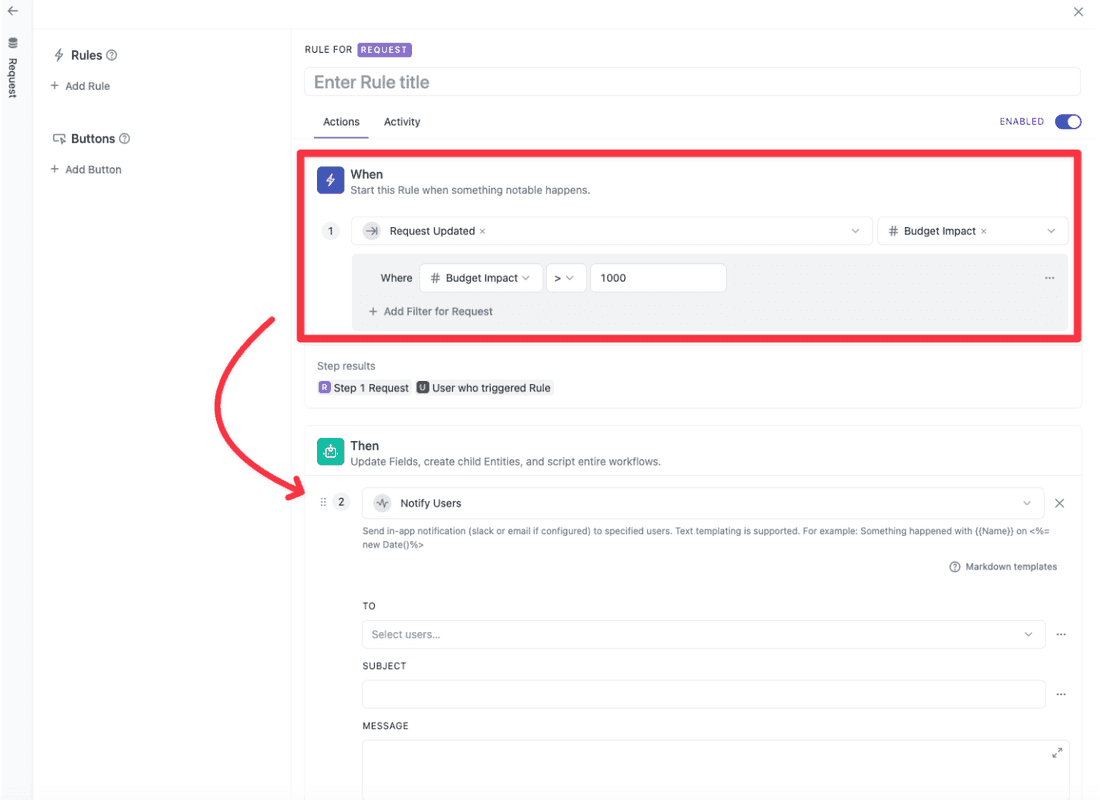
Finally, you can attach quotes, contracts, invoices, and other relevant documentation directly to procurement requests or supplier records in Fibery, keeping everything organized and accessible.
Say you’re a product team that needs specialized components with a long lead time. Using Fibery, you can:
- Submit a request with clear specifications, triggering an approval workflow.
- Track quotes from multiple suppliers linked to the request.
- View the impact on the project timeline and budget as the procurement progresses
All within one workspace.
If you use any finance or communication tools you’d like to connect, you can do so through our API or Zapier. We also have a couple of plug&play integrations ready for you.
And here’s the best part – you can test it out for free. Centralize your procurement management today.
2. Coupa
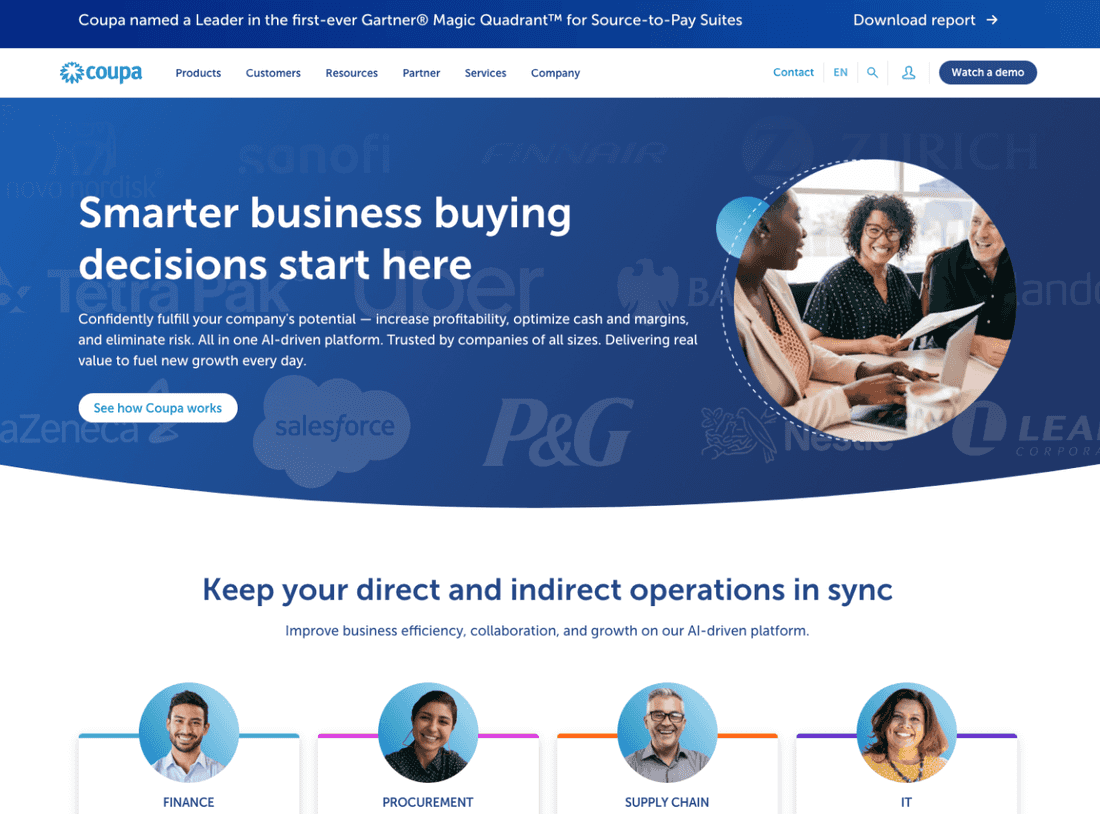
-
Best for: Big enterprises in need of robust monitoring capabilities
-
Price Point: Generally tailored for larger organizations, pricing is quote-based.
Coupa is a comprehensive suite covering sourcing, contracting, spend analysis, invoicing, and more.
It has robust reporting and analytics features, especially useful for enterprise needs.
On the other hand, due to its extensive capabilities, it can have a steeper learning curve.
The implementation may require dedicated time and people involved, so it may not be the best pick if you work in a tiny, always busy team.
3. SAP Ariba
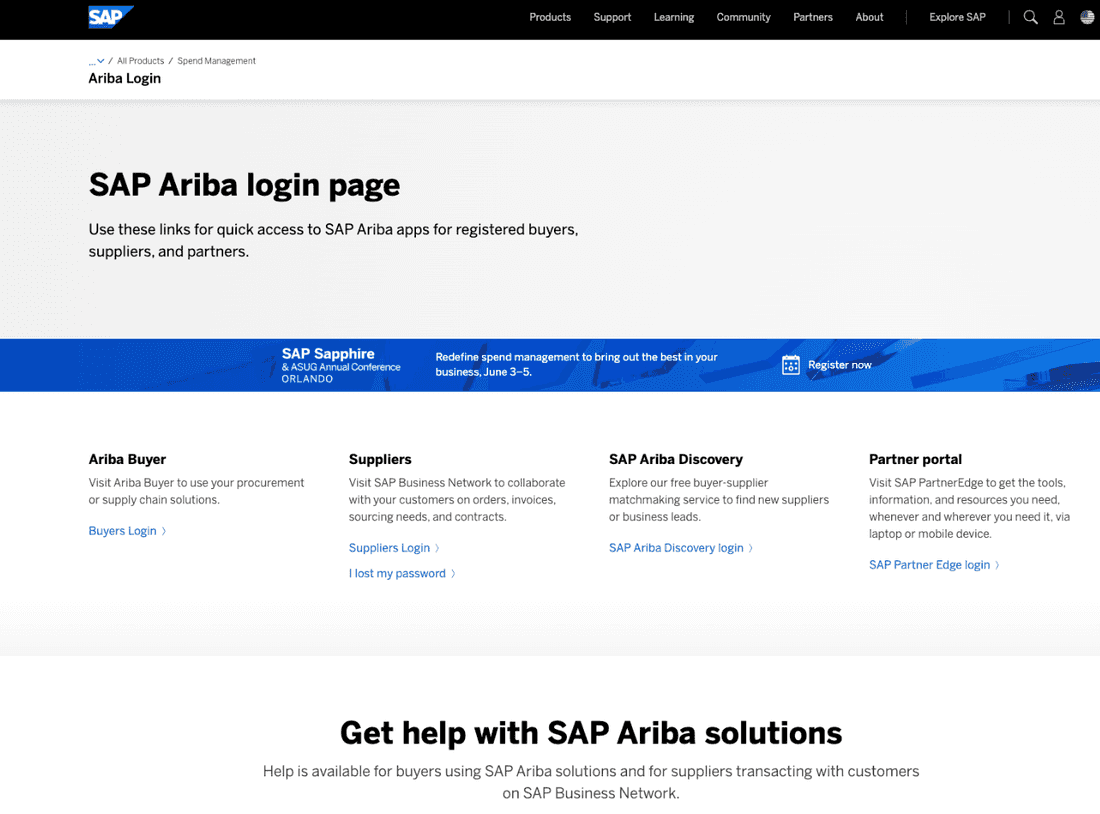
- Best for: Large organizations seeking integration with existing SAP systems, or those with complex global supply chains.
- Price Point: Modular pricing, costs can vary significantly based on chosen features and scale.
SAP Ariba is a widely used platform with an extensive supplier network. It offers guided buying, collaboration tools, and risk management features, making it ideal for companies already heavily invested in the SAP ecosystem.
On the other hand, it can be complex to set up and manage for smaller teams or those without dedicated IT resources.
SAP Ariba may be overkill if your procurement needs for product development primarily focus on streamlining purchasing and tracking spend.
4. Procurify
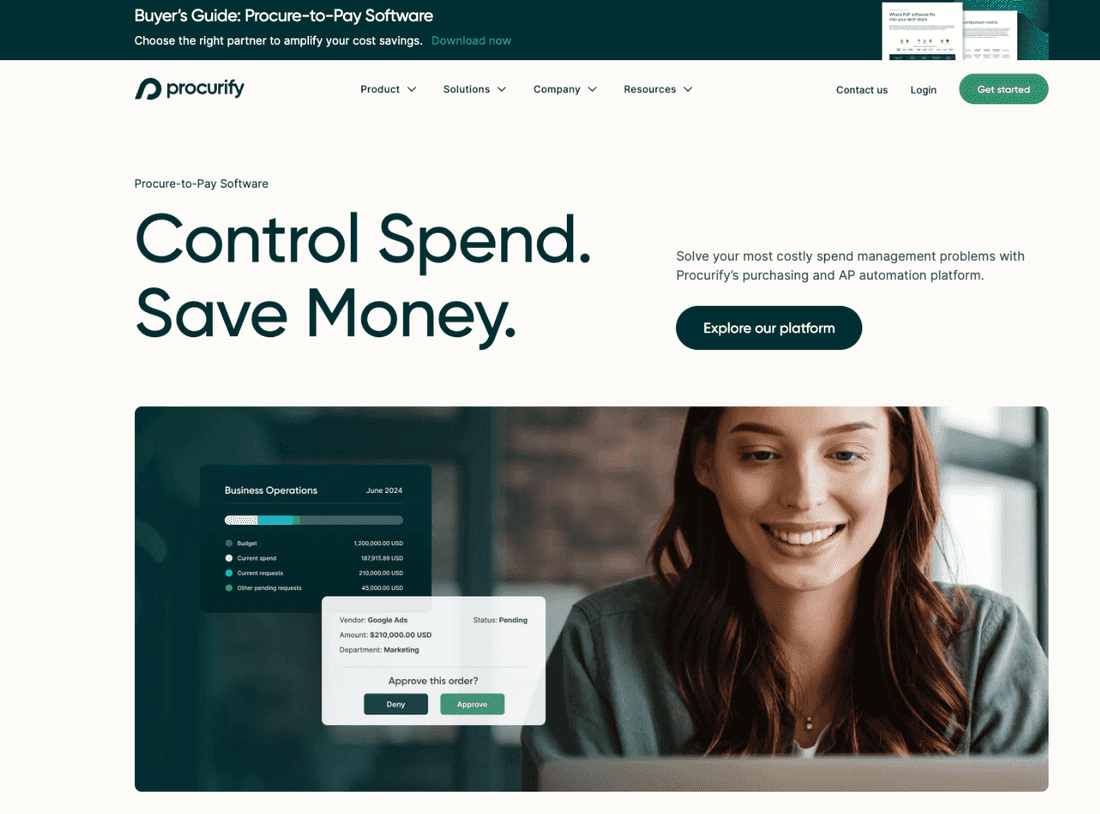
- Pros: User-friendly interface, good for teams seeking ease of use. Strong spend management and budget tracking capabilities.
- Cons: May lack some advanced sourcing features of enterprise-level platforms.
- Price Point: Tiered plans based on number of users and features needed.
5. Precoro
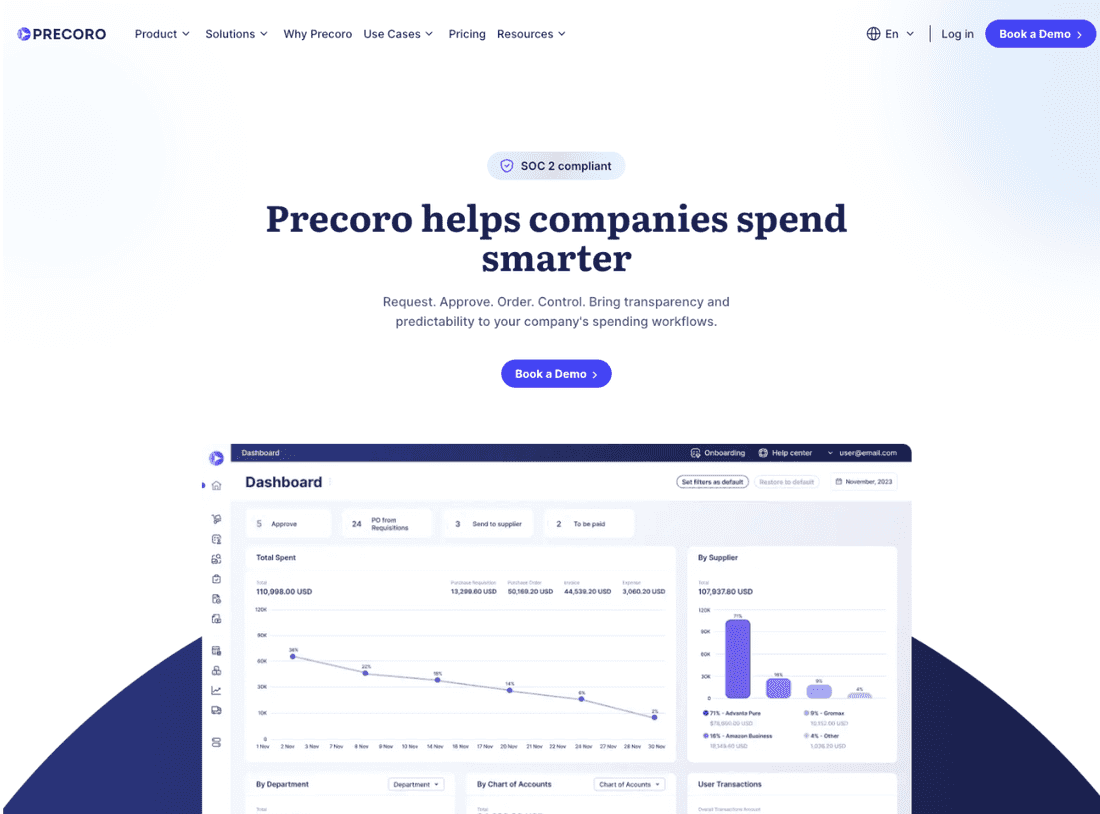
- Best for: Small to mid-sized businesses prioritizing ease-of-use and streamlined purchasing workflows.
- Price Point: Transparent pricing plans based on the number of users and desired features.
Precoro stands out for its intuitive, modern interface, appealing to teams who want to get a procurement system up and running quickly. It emphasizes simplifying the purchasing process with robust features for managing purchase orders, approvals, and budget tracking.
However, if your team requires advanced sourcing features, contract management tools, or complex supplier discovery, Precoro might not offer the same depth as some of the larger enterprise-focused platforms.
6. Zoho Procurement
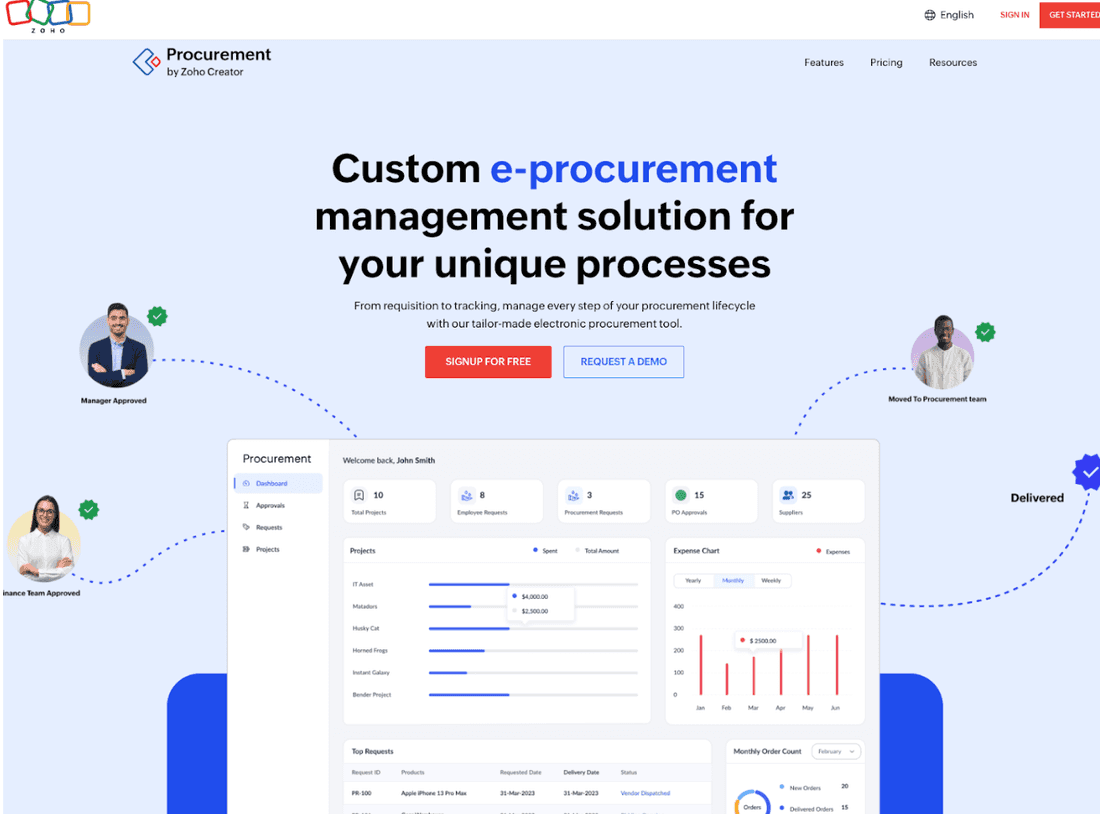
- Best for: Teams that have already invested in the Zoho suite of products and are seeking affordability and integration with other business tools.
- Price Point: Tiered pricing based on the number of users and transactions.
Zoho Procurement is a compelling option for businesses that use other Zoho applications (CRM, accounting, etc.) because it offers seamless integration across the platform.
It’s an affordable choice that focuses on streamlining purchasing and spending management.
However, if your team needs a procurement solution with advanced sourcing, supplier management, or complex analytics features, Zoho Procurement might seem less robust than some standalone procurement software specialists.
7. Oracle Procurement Cloud
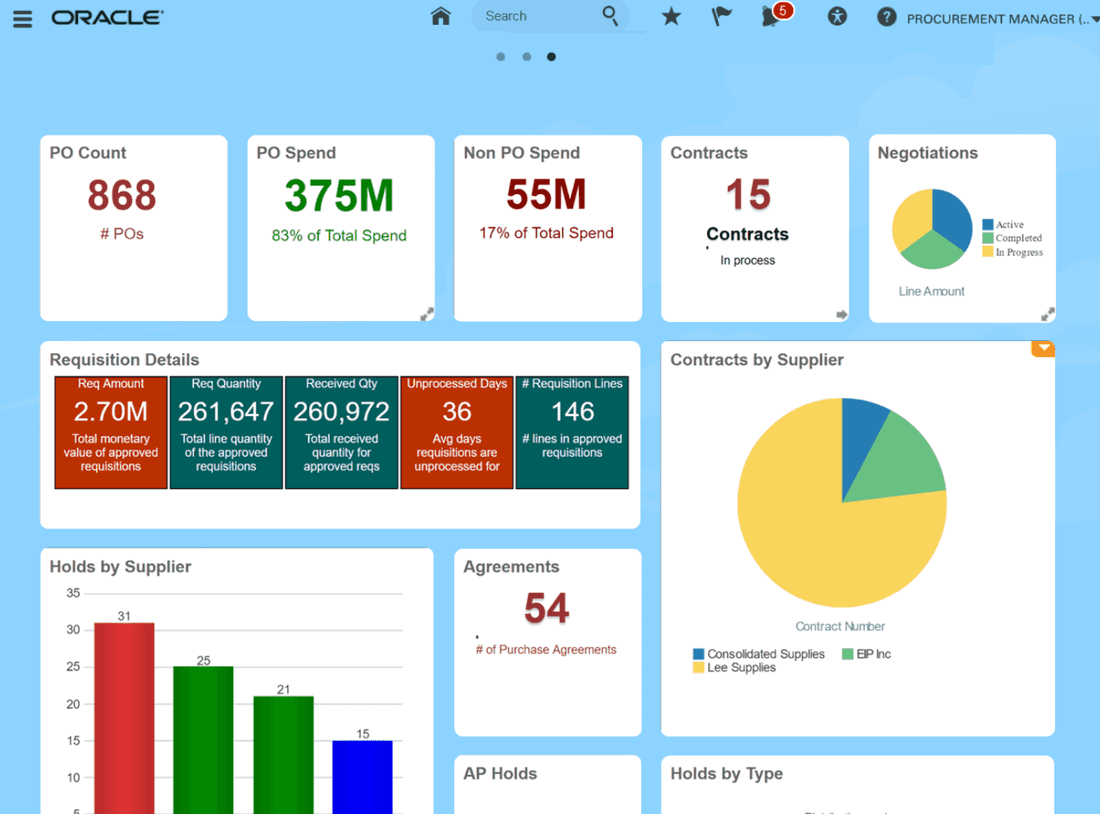
- Best for: Enterprises heavily invested in Oracle technology seeking deep functionality and tight integration with their existing systems.
- Price Point: Quote-based, typically aimed at enterprise-level customers.
Oracle Procurement Cloud is part of the extensive Oracle Cloud suite. It offers comprehensive features covering strategic sourcing, supplier management, complex contract workflows, and in-depth analytics.
For companies already using many Oracle products, the integration benefits can be significant.
However, this platform can be complex to configure and may require significant IT resources to manage. Teams focused primarily on streamlining purchasing for product development might find it overly complex for their immediate needs.
Conclusion
The right procurement software can change how your product team sources materials and manages budgets.
While choosing, consider factors like your team size, process complexity, and the need for integration when making your decision.
Ready to dive deeper into optimizing your team’s workflows? Grab a free 14-day trial for Fibery here.
Psst... Wanna try Fibery? 👀
Infinitely flexible product discovery & development platform.